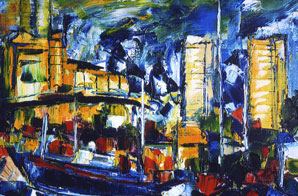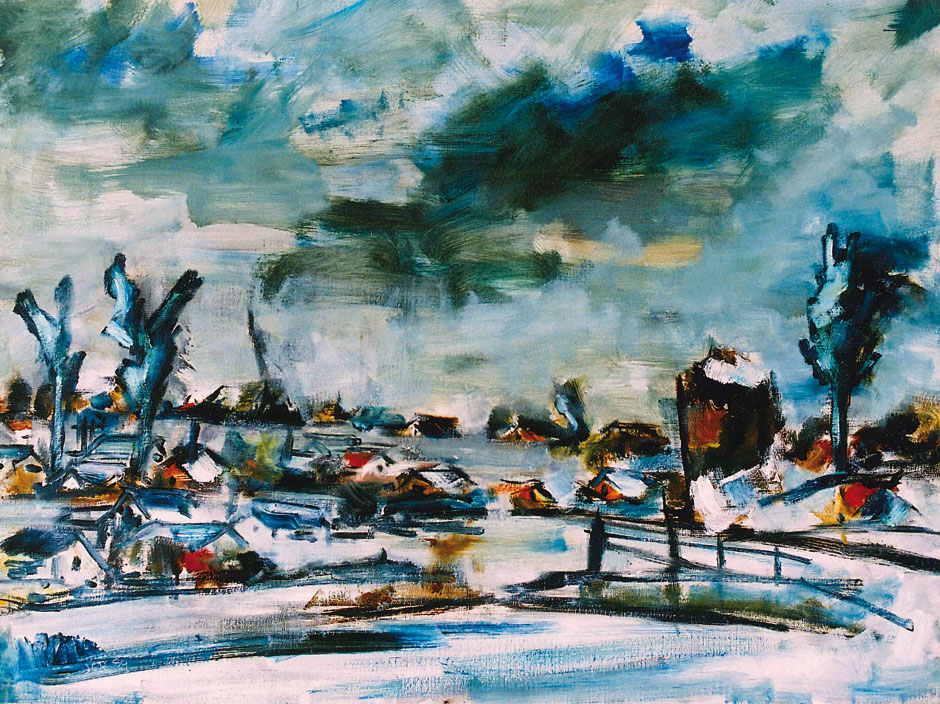German Expressionist painting by Hubert Roestenburg
German Expressionism, as well as expressionist painting in general owes a great debt to painters like Vincent van Gogh and Edvard Munch. That influence can be seen in the work of Hubert Roestenburg.
As a child-prodigy he was stuck with the moniker: “the second van Gogh”. Roestenburg, even after all these years, does not like to be reminded of that. It was the main reason he left the Netherlands at a young age. Now, considered to be the last living artist to really represent German Expressionist painting, we can step back and see how his work has evolved.
His painting was always more “moody”, “turbulent” and “intense” than either van Gogh or Munch and this painting is a prime example. It can lead the viewer to places where they may not want to go. Typical of so many Hubert Roestenburg paintings, it can be experienced in different ways. Is it a journey into darkness or maybe a journey out of darkness? Ultimately we are given an opportunity to learn about ourselves.
German Expressionism
German Expressionism, generally considered a pre-World War II art movement, came back after the war ended. German Expressionist art is more than just a style; it can also be seen as a means of approaching life. Hubert Roestenburg is a philosopher as well as a painter. His overarching philosophy of personal freedom inspires and informs all of his work.
.
Click images to enlarge and to learn more about each individual painting














